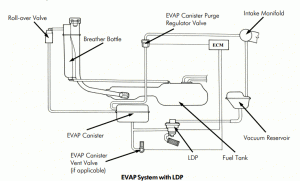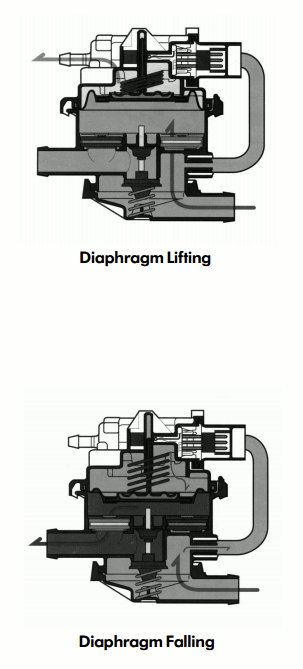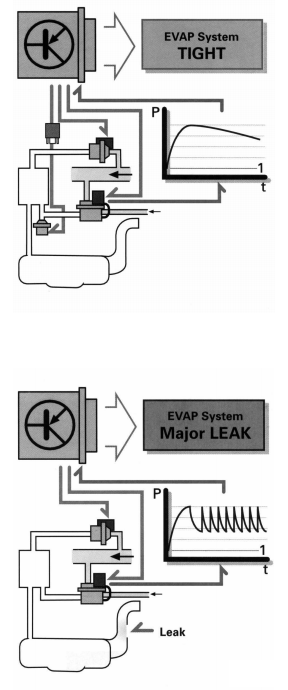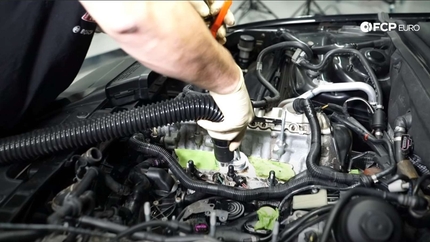Have you ever left your gas cap off and got a check engine light? It happens to the best of us, don't be afraid to admit it. Why does the check engine light come on? Is there really something seriously wrong with leaving the gas cap off?
Leaving the gas cap off opens the evaporative fuel system, or EVAP system, to the atmosphere. Raw gasoline vapor is a major source of pollution from cars, so much so that fuel vapors are contained and diverted through the engine to be run through the engine with the intake air on newer cars.
 Overview of a simple EVAP system. Note the different components and their routing to atmosphere and engine intake
Overview of a simple EVAP system. Note the different components and their routing to atmosphere and engine intake
Prevent unburned fuel from escaping
Modern EVAP systems can detect small leaks, down to .010”, and set a check engine light. Since OBD-2, cars have been fitted with systems for monitoring flow and leaks of fuel vapors, in an effort to reduce emissions.
The systems are constantly evolving, and new technology is always being introduced to help detect smaller leaks and prevent unburned fuel from being released into the atmosphere.

Volkswagen LDP. Engine vacuum comes in on the top left and pressurized air comes out on the bottom left.
A typical EVAP system on an Audi or Volkswagen consists of a few important components. There's a filler cap, which seals the system at the top, a purge valve, which allows fuel vapors to enter the engine, a charcoal canister, which cleans fuel vapors before they are released to the engine or to atmosphere, a vent valve, which controls the venting from the canister to the atmosphere, and a leak detection pump, which does exactly what it sounds like. All these systems work together to check the integrity of the EVAP system every drive cycle, depending on the fuel level, coolant temperature, and intake air temperature.
The leak detection pump pressurizes the system
When the system checks itself for leaks, it does a few things. First, the vent valve and purge valves are closed, in order to seal the system at both ends. Next, the leak detection pump runs. It pressurizes the EVAP system, and once pressure is achieved, it watches for pressure loss.
The leak detection pump on an Audi or Volkswagen is an interesting piece of engineering. Essentially, it uses engine vacuum to actuate a diaphragm and create pressure. Once the engine vacuum cannot lift the diaphragm, the system has reached maximum pressure. The position of the diaphragm is monitored, and if it falls within a certain period of time, a loss of pressure is found. Depending on how much time has passed, the leak is categorized as either a gross leak, small leak, or very small leak.
 If you leave your gas cap off, there's a gross leak in the system. The pump will keep running and not hold pressure, so it will set a fault for gross leak. If you have a small hole in an EVAP hose, about .5 mm, the diaphragm of the LDP will fall during the test cycle, and set a fault for small leak or very small leak.
If you leave your gas cap off, there's a gross leak in the system. The pump will keep running and not hold pressure, so it will set a fault for gross leak. If you have a small hole in an EVAP hose, about .5 mm, the diaphragm of the LDP will fall during the test cycle, and set a fault for small leak or very small leak.
Monitoring the LDP during EVAP tests. The graph shows diaphragm position and pump cycle over time
Almost all of the EVAP leaks that I see are not leaks in hoses. By far the most common EVAP failure I see is the purge valve. They tend to stick open slightly, and the system doesn't seal fully. When the LDP runs and sees a drop in pressure, it reads it as a leak, and sets a fault for small leak. These systems are difficult to diagnose without the correct software to initialize the test and hardware to check for leaks. If you have a check engine light for EVAP small leak on your Audi or VW, first check the gas cap. If it's loose, tighten it. If it's tight, pull it off and check the rubber seal for cracks. If it looks good, you might want to throw a purge valve in. It's about $30 and I see them fail all the time.
EVAP running losses and leaks are larger sources of automotive emissions then you would think. Putting a gas analyzer on a leak of .5 mm will show around 7000 PPM of hydrocarbons, while tailpipe emissions on newer cars are around 12 PPM. Think about it this way. An EVAP leak of .5 mm can cause hydrocarbon emissions of roughly 1.35 grams per mile, which is more than 30 times the allowed level. A dime weighs 2.27 grams. Imagine the weight of a dime worth of hydrocarbons being released every two miles from unburned, unused fuel and you can understand why this system is important.











